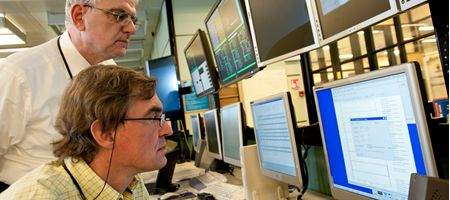Last Friday, the JET fusion power project went back into operation after the installation of the ‘ITER-Like Wall’.

The upgrade consists of the introduction of new materials inside the JET vessel, as well as more heating power and extra diagnostic systems.
The ITER initiative aims to prove that fusion’s a viable energy source, and to collect the data necessary for the design and subsequent operation of the first electricity-producing fusion power plant.
“This is probably the largest effort that has been put into JET apart from the construction of the machine itself,” says European Fusion Development Agreement (EFDA) leader Francesco Romanelli.
“With the expertise and contribution of many fusion laboratories, the JET team has succeeded in building a small ITER. We had a very good start with high purity plasmas readily established in ITER relevant conditions – a promising sign for the use of these wall materials in ITER.”
Between October 2009 and May 2011, engineers replaced around 86,000 components, largely using remote handling technology.
The inside of the JET vessel is now made of beryllium and tungsten tiles. Beryllium is being used in the main wall, whereas tungsten, with its high melting point, is used for the exhaust component known as ‘divertor’, which has to withstand high heat flux.
The other main enhancement is a 50 percent increase in the heating power, allowing JET to achieve higher plasma temperatures and approach ITER conditions. New diagnostics and control systems have also been installed.
JET will now be progressively brought up to full power.
“We have plans to use the deuterium-tritium fusion fuel mix of ITER in 2015, to allow full exploitation of JET’s new capabilities,” says Romanelli.
“We hope to set new performance records and provide the best possible preparation for ITER.”






